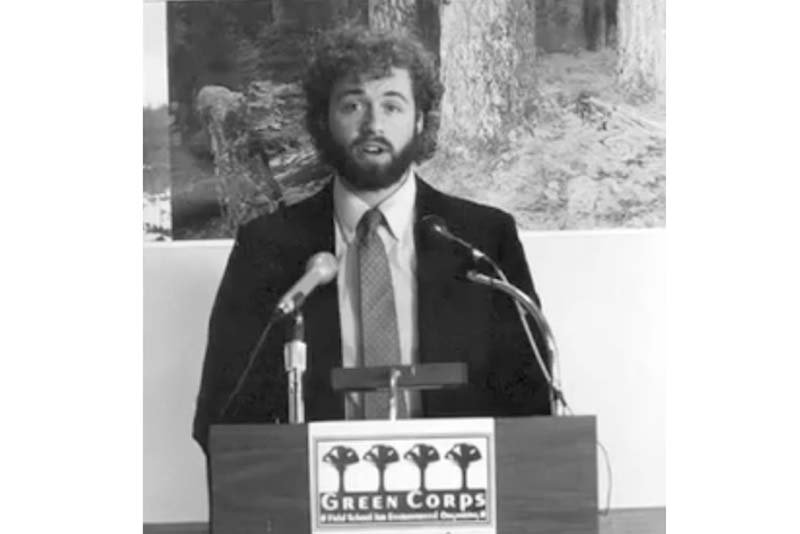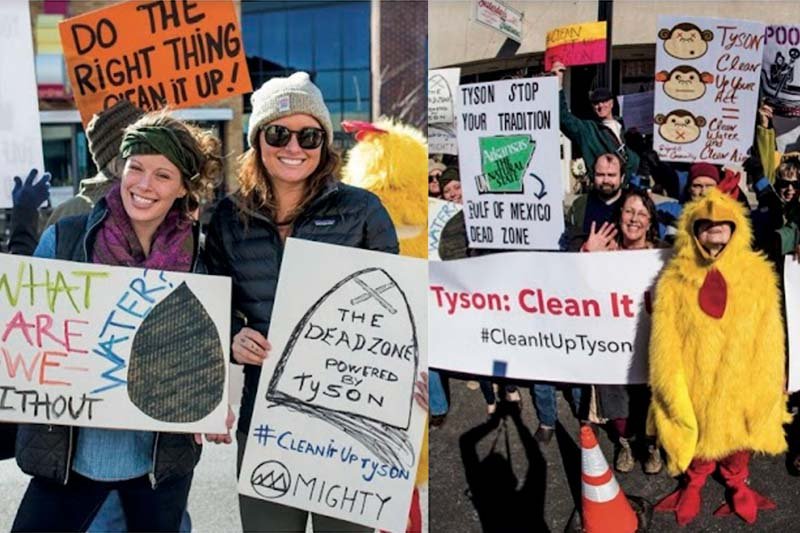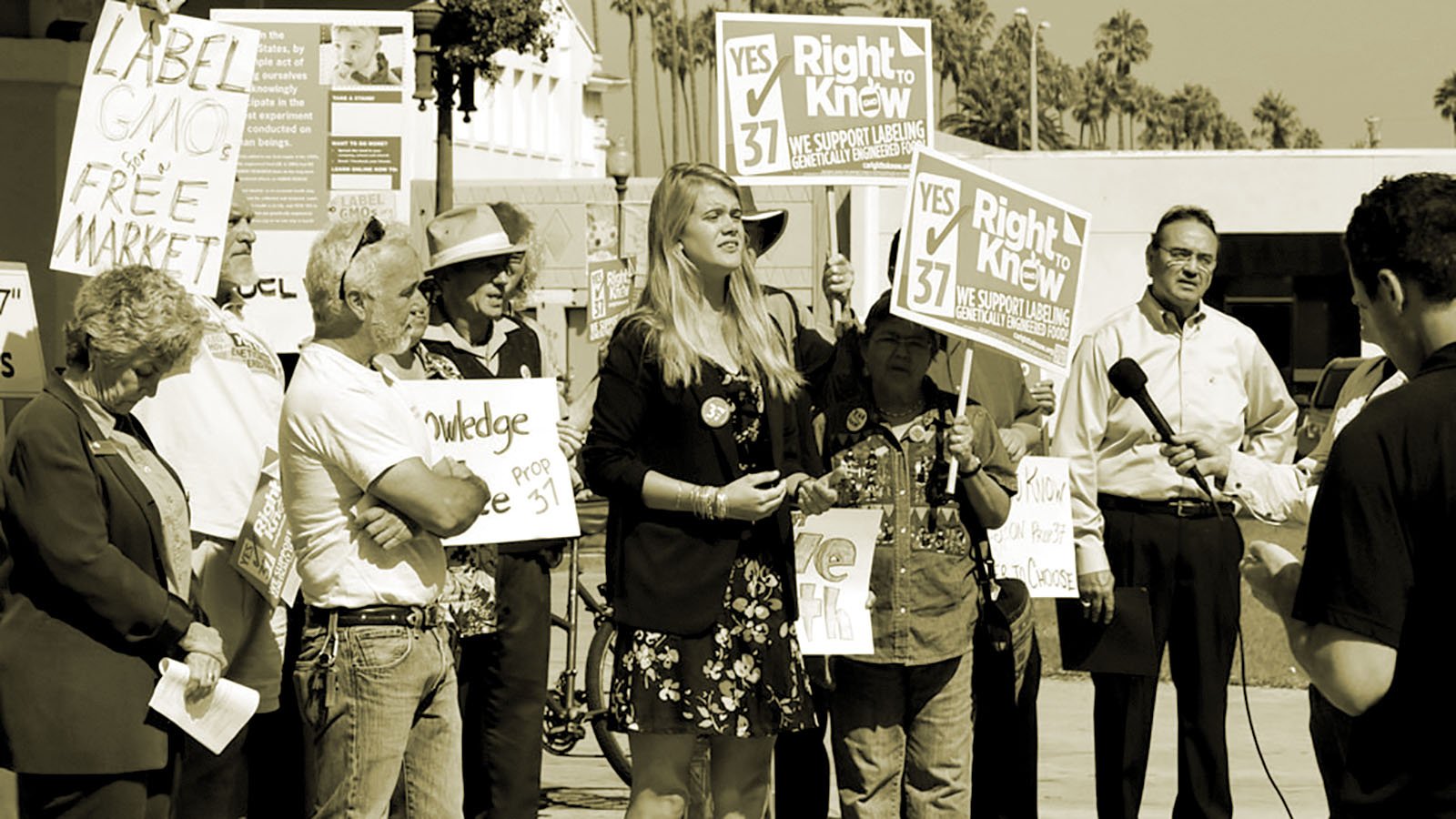
Training new generations of environmental organizers
Green Corps accelerates the development of emerging activists
Wanted: more organizers
Visit America’s colleges and universities and you’ll find plenty of students aspiring to become environmental scientists, environmental lawyers, environmental engineers and environmental policy experts. All of which the environmental movement needs.
But the movement also needs organizers: people who know how to build and run effective campaigns and organizations that inspire the popular support and political action needed to win positive environmental change.
If you want to become a scientist, lawyer, engineer or policy expert, the path to follow is clear: Pick the right undergraduate major. Attend the right graduate school. Find a job.
For too long, however, the path to becoming an environmental organizer was harder to find and follow. Where could the aspiring environmental change-maker find the training and experience they needed to transform their calling into a career?
Green Corps, in the words of a few of our alumni…
A new training model
Starting in 1992, Green Corps sought to fill this need. Over the next 30 years, more than 400 recent college graduates and others would take part in the program. Nearly all of them remained active in the environmental, public interest and progressive communities.
The Green Corps model borrowed some from PIRG training programs, combining classroom training with guided hands-on experience in recruiting and training volunteers, developing strategic campaigns, building coalitions, organizing events, gaining media coverage and more.
What made Green Corps different included the exclusive focus on the environment, a deeper dive into the theory of change behind organizing, partnerships on campaigns with groups outside of the PIRG network, and a one-year timeframe, after which organizers would graduate from the program and seek positions in the environmental movement.
Here’s the story of how Green Corps came together, the difference Green Corps organizers have made, and the impact they continue to make after Green Corps.
Video credit: Lenny Media via Shutterstock

Training new environmental organizers
In the spring of 1992, a small team led by Gina Collins-Cummings and Leslie Samuelrich visited college campuses across the country.
Their mission was to recruit talented, motivated but inexperienced graduating students and others to sign up for an idea that was not yet a reality: a one-year experiential training program in organizing environmental campaigns.
The idea was the brainchild of Doug Phelps. Gina and Leslie, working with Ken Ward and other experienced organizers, shaped the idea and turned it into a curriculum that included theory and practice, readings and roleplays, the classroom and the real world.
By the summer of 1992, recent grads Adam Ruben, Sarah Forslund, Ted Halstead and other members of the first Green Corps class were in training at [Harvard University]. By the fall, they were organizing support for ballot initiatives on recycling and toxic waste cleanup, and organizing support for forest protection with the Rainforest Action Network. By the following summer, they were graduates of the Green Corps Class of 1993. Adam found a job as field organizer with Sierra Club, Sarah joined the Northern Forest Alliance, and Ted founded his own think tank called Redefining Progress.
This cycle – a recruitment drive; a classroom training; campaigns punctuated by more classroom training; a late summer graduation into new jobs and roles within the larger environmental and public interest communities – would repeat itself, with variations and evolutions, year after year after year. Soon, Green Corps had earned a reputation as the nation’s premier training program for new environmental organizers.
‘It’s about power’
The theory behind Green Corps was summed up in part by writer, activist and Green Corps guest trainer Bill McKibben: “It took me a long time to realize that while scientists had won the argument, they were going to lose the fight because it isn’t about data and science. It’s about power. At a certain point, it became clear that our only hope of matching money was with the currencies of movement: passion, spirit, creativity … and warm bodies.”
Natalie Foster, a graduate in the Green Corps Class of 2002, reflected on how the program taught new organizers how to amass and wield people power:
“In my year, I participated in a media training on running a press conference. Soon after, I was on my way to Georgia to target (the late former U.S. senator) Max Cleland and ask him to protect the Arctic National Wildlife Refuge. I held my first press conference at the Carter Center in front of this big bronze caribou that indicated President Carter’s belief in protecting the refuge. My press conference brought together labor leaders, clergy members and reporters from across Georgia, and one of the reporters was from the Associated Press. His piece from the press conference on migratory birds and the refuge was picked up and reprinted in outlets all across the United States.
“Green Corps gave me the training I needed to make this experience a success.”
David Brower (the former Sierra Club executive director, founder of Friends of the Earth, co-founder of the League of Conservation Voters, and founder of the Earth Island Institute) was a supporter of Green Corps before he passed in 2000. He said, “The Earth, which is taking a beating at human hands, is awash with people who express concern about it, but there is a drought of people able to organize to stop the abuse. Green Corps prepares university graduates for the essential commitment to end the drought.”
Photo: Leslie Samuelrich (front, third from right) and Gina Collins-Cummings (front, second from right) stand with an early Green Corps class. By staff
Footnote: Sarah Forslund passed away in 2002. Green Corps has recognized outstanding members of the program with a fellowship in Sarah’s name. Ted Halstead passed in 2020, after founding The Climate Leadership Council.

Early Green Corp leaders Gina Collins-Cummings and Leslie Samuelrich. By staff

Adam Ruben, Green Corps class of 1993. Image by staff. Watch Adam reflect on his Green Corps experience here: https://youtu.be/slLPlfkyE3E

Natalie Foster holds her first press conference in her year with the Green Corps, 2001. Watch her interview here: https://youtu.be/ul_rA5HBoYA

When you hear the words “training” or “education,” you imagine a classroom.
For sure, Green Corps trainings over the years took place in classrooms in Boston, Washington, D.C., Denver and other cities. Yet Green Corps training never stopped at the classroom door.
As part of their training, Green Corps organizers developed their skills through guided practice in the field. Environmental groups, including The Wilderness Society, Greenpeace, Defenders of Wildlife and dozens of others, partnered with Green Corps to organize campaigns on conservation, climate change and more. Here are some Green Corps “greatest hits”:
Stop the Rollbacks (1994-95)
In March 1995, congressional leaders were seeking to eviscerate federal environmental protections including the Clean Air Act and Clean Water Act. Green Corps organizers were tasked with moving several first-term members of Congress to stop the rollbacks.
Green Corps organizer Jeanne Merrill was instrumental in convincing first-year U.S. Rep. Sue Kelly (R-N.Y.) to buck her party’s opposition to environmental protections. Jeanne organized news conferences and a petition drive that helped bring Rep. Kelly on board. Similar efforts across the country helped hold the line against the worst anti-environmental measures in Congress.
The Paper Campaign (2000-2005)
By the year 2000, paper production was destroying 5 million acres of forests in the U.S. each year.
Green Corps partnered with the Dogwood Alliance to launch the Paper Campaign, an effort designed to shift the office supply industry toward recycled paper products.
Green Corps organizers kicked off the drive to convince industry leader Staples to adopt an environmental sustainability policy. The Green Corps team trained 150 activists and conducted demonstrations at Staples stores, which gained the attention of regional managers across the country. That same year, Staples agreed to phase out paper products made from endangered forests and ensure 30% post-consumer recycled paper content for all of its paper products.
Between 2003 and 2005, Green Corps organizers, including Eva Hernandez, helped convince Office Depot and the Bowater paper company to adopt policies to better protect America’s southeastern forests.
Beyond Coal (2008-2015)
In 2008, the coal industry had proposed the construction of 150 new coal-fired power plants across the country, despite the growing peril of climate change. Green Corps partnered with Sierra Club to help launch the Beyond Coal campaign, activating thousands of citizens to beat back this "coal rush."
Green Corps organizers were instrumental in convincing the Houston-based coal giant Dynegy to drop its proposals to build six new coal plants in communities from Michigan to Louisiana.
Later, Green Corps organizers worked to retire existing coal plants on campuses and in communities. Green Corps organizing helped win coal-free commitments from Penn State University, SUNY Binghamton, UNC-Chapel Hill, Ohio University, Clemson University and Miami University. In 2011, Green Corps organized more than 2,000 volunteers and gathered nearly 30,000 petition signatures, urging eight cities and 12 university campuses to reduce their dependence on coal.
In addition to these campaigns, the Green Corps list of greatest hits includes:
2004: Green Corps organizers convinced the Royal Caribbean cruise line to clean up its fleet of ships and stop releasing sewage into our oceans.
2011-2014: Organizers undertook the Clean Air Indiana campaign to win a long-term clean energy commitment from Indiana’s largest utility company.
2018: Organizers successfully convinced Tyson Foods, the largest chicken producer in the nation, to clean up water pollution in its supply chain.
The organizers who worked on these campaigns and others picked up invaluable skills and experience while winning changes that improved the quality of the environment and people’s lives.
Photo: [Green Corps organizer Charley Olena (center) speaks at rally for a California ballot measure in 2012 calling for labeling of genetically modified foods.]

Green Corps organizers working with Mighty Earth at a press event in April 2018, celebrating Tyson’s commitment to improving farming practices on 2 million acres of grain by 2020. Photos courtesy of Jamie Seed

Green Corps’s Annie Sanders participates in a small group session during a Green Corps classroom training in 2012. By Leise Jones

A Green Corps organizer leads a rally as part of the Beyond Coal campaign. By staff

More than 400 new organizers have completed the Green Corps training program. The vast majority are still organizing campaigns and building organizations that protect the environment and serve the public. Here are three of them:
Johanna Neumann
(Class of 2002)
Johanna Neumann’s environmental awakening came at an early age, when in 1986 radioactive fallout from the Chernobyl nuclear meltdown reached her native Germany.
Fifteen years later, after graduating from Tufts University, Johanna was accepted into the Green Corps program. Since then, she has taken on a range of positions within the environmental and public interest communities, including organizer with Community Action Works (then called Toxics Action Center), director of Maryland PIRG, and director of donor relations with The Public Interest Network.
In 2020, Johanna became the senior director of Environment America’s 100% Renewable Energy campaign. In just two years, Johanna and her team helped win commitments to 100% clean energy by Illinois, Oregon and Tampa, Florida; extend federal clean energy tax credits; advance offshore wind developments in Massachusetts, California and New Jersey; win stronger appliance efficiency standards in Oregon and New Jersey; and secure a $73 billion investment in clean energy as part of the 2021 Bipartisan Infrastructure Act.
Image from MSNBC.
Patti Lynn
(Class of 1997)
Since graduating from Green Corps, Patti Lynn has spent nearly her entire career in social change with Corporate Accountability, an organization that stands up to global corporations on the environment, human rights and democracy.
A signature campaign for Corporate Accountability has been Think Outside the Bottle, an effort aimed at persuading people to stop buying bottled water and opposing the privatization of public water supplies. It’s also a campaign that gave Patti and her team an opportunity to work with newer Green Corps organizers. Corporate Accountability partnered with Green Corps to build support for the campaign, organizing events such as the Tap Water Challenge, inviting passersby to see if they could taste the difference between bottled water and water from the tap.
As executive director since 2015, Patti has built Corporate Accountability’s organizational strength and resources. Patti also has focused on training and developing Corporate Accountability’s staff at every level of the organization.
“I have witnessed incredible courage in the hearts and actions of so many people through this work,” said Patti. “We face down tremendous power and win important change together with people around the world.”
Photo by staff.
Jesse Littlewood
(Class of 2004)
When the first Green Corps class graduated in 1992, the World Wide Web had only recently been invented. The Class of 1995 graduated months after the first mass email action (to protest a bill outlawing rave festivals in the United Kingdom). By the time Jesse Littlewood graduated with the Green Corps Class of 2004, a few Harvard students had just created “The Facebook.”
In the years to come, however, Jesse would apply many of the organizing lessons he learned with Green Corps to the emerging field of digital organizing for the environment and the public interest.
After he graduated, Jesse remained with Green Corps, working with new organizers while building a stronger digital presence for the group. From there, he pivoted to full-time digital work with The Public Interest Network, leading a major overhaul of our web presence, including the Environment America website.
Jesse gained more digital expertise with Echo & Co., a for-profit digital agency that focused on working with non-profits, including his award-winning project for Understood.org. In 2015, Jesse came on as digital director of Common Cause, the long-time democracy advocate.
At Common Cause, Jesse helped grow the organization's membership and activist list from 250,000 to more than 1 million members and supporters and raised more than $4 million online from thousands of small-dollar donors.
And he’s still training others: Jesse also lectures at the Harvard Kennedy School of Government, where he teaches “Social Change in the Digital Age.”
Top photo: From Green Corps class of 1998 to Environment America adovcate to executive director of the California Solar Energy Industries Association, Bernadette Del Chiaro is a leader in the push for solar power. Photo by Marcos Hernandez, California Solar Energy Industries Assn.

Former Green Corps Executive Director Josh Buswell-Charkow leads a small group training in 2012. Photo by Leise Jones Photography

Former Green Corps Executive Director Cindy Kang (left) strategizes on a campaign with a Green Corps organizer. Photo by staff

Former Green Corps Executive Director Naomi Roth (right) campaigns to preserve the Arctic National Wildlife Refuge. Photo by staff







